Shadow Pilgrim
An accidental trick of light casts the perfect shadow of a pilgrim of the Camino de Santiago against the cathedral wall.
Every night in a corner under the baroque clock tower in the Plaza de la Quintana, a hunched pilgrim appears. He stands life sized, and wears the traditional garb of the religious pilgrim: cloak, broad-brimmed hat, and a staff top-heavy with a gourd for water and the traditional scallop shell, which is the symbol of the pilgrim.
Upon closer inspection, the pilgrim is a trick of the light - and an unintentional one. His body is the shadow cast by the lightning rod pillar in the corner, and his staff is the shadow of the support column of the Berenguela clock tower. There are dozens of these lighting rods and hundreds of vertical supports in the cathedral exterior, but only one pilgrim.
According to local legend, the pilgrim is a local priest, who had fallen in love with a nun of the convent of San Paio, across the plaza. They met every night secretly, traveling through a secret passage under the Quintana stairs that join the convent to the cathedral. The two lovers planned to elope, and he promised to meet her in the plaza dressed as a pilgrim to conceal his identity. On the appointed evening, he waited in the shadows, but she never came. Since then, every night he returns, hoping to see her.
Dressing as a pilgrim is a good disguise in a city that has historically been flooded with them. Pilgrims have been coming to Santiago de Compostela for more than a thousand years, walking the miles from France through the well worn route of the Camino de Santiago. They came to receive the blessings and forgiveness of sins from the body of the Apostle James, purportedly buried in the cathedral. The story of the discovery of the bones of St. James (Sant-Iago) has the flavor of medieval fervor: In the year 813, when most of Spain was under Islamic rule, a hermit, guided by heavenly light (the Campus Stellae, or field of stars in the city name), discovered the previously unknown tomb of the apostle, somewhat improbably in far Northern Spain. The bishop at the time determined that the bones had arrived in 44 AD by an unmanned, rudderless boat following the decapitation of James in Palestine. A shrine, and then a church, and finally a cathedral were built over the site of the discovery, and the pilgrimages began.
Know Before You Go
Walking from the north-east corner of the cathedral complex through the Plaza de la Quintana, towards the front of the cathedral, walk down the first set of stairs into the large plaza area. Look for the deep corner between the base of the clock tower and the Royal Door. The pilgrim is next to the lightning pillar.

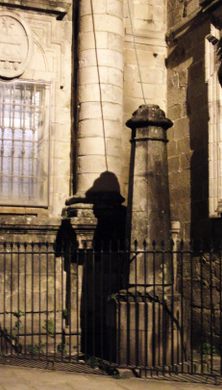
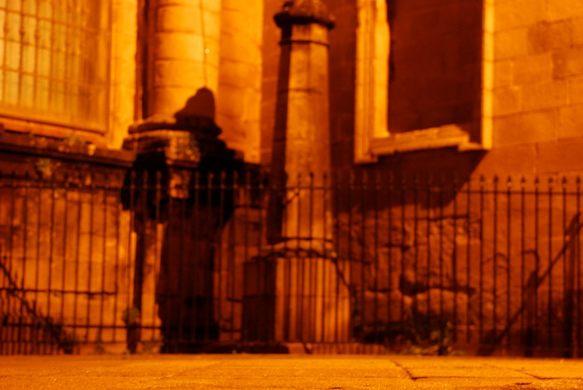


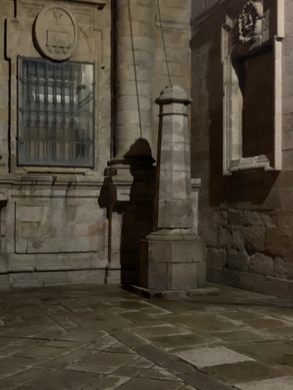
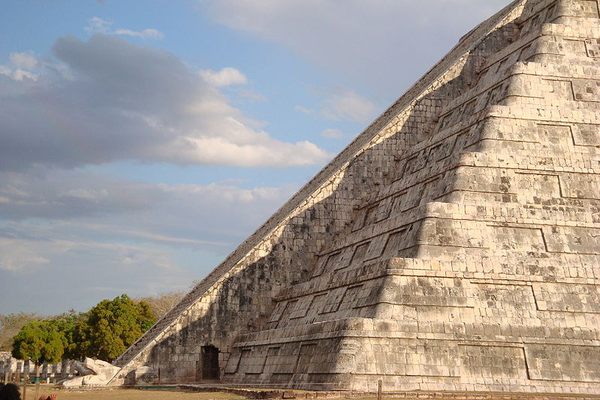













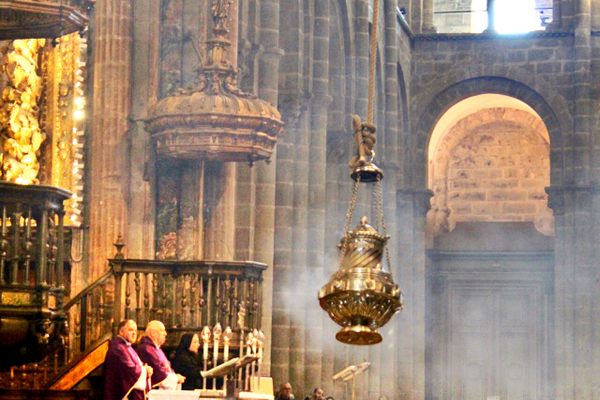

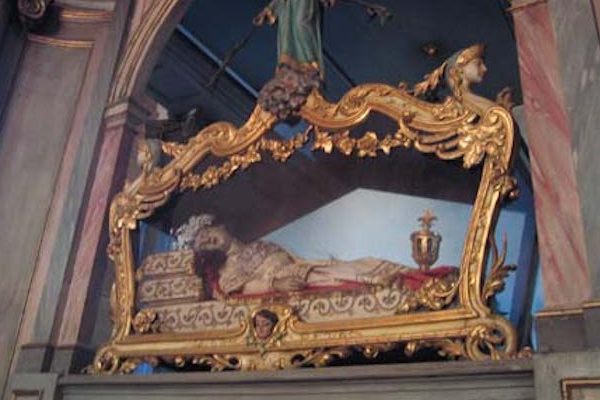
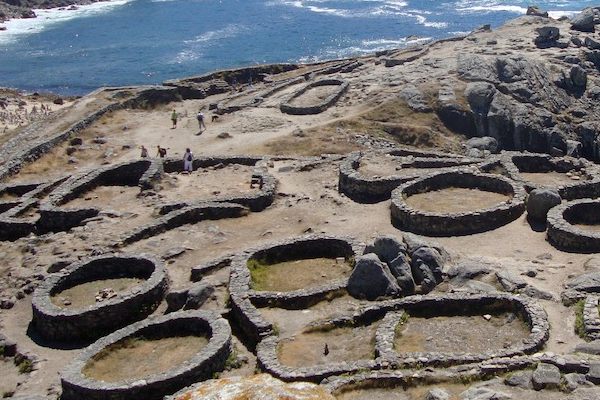

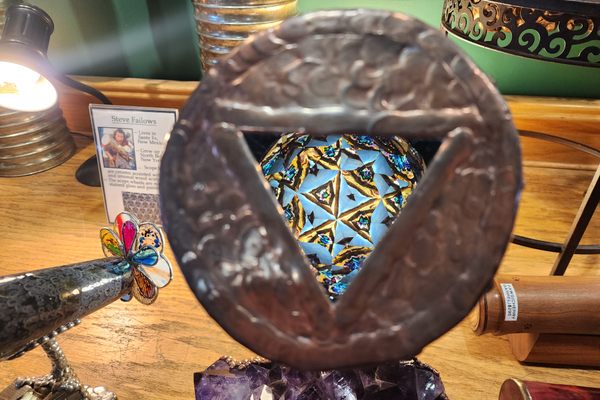



Follow us on Twitter to get the latest on the world's hidden wonders.
Like us on Facebook to get the latest on the world's hidden wonders.
Follow us on Twitter Like us on Facebook